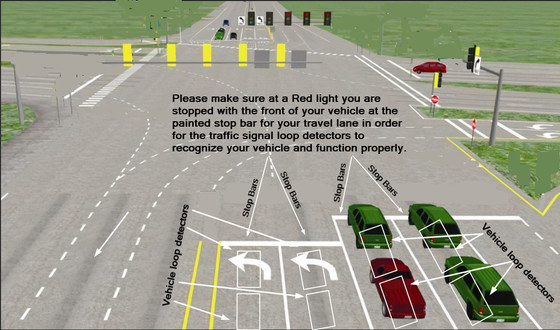 MADISONVILLE, Ky. (May 10, 2022) – Are you one of those drivers who complains when you are stopped at a red light for what seems to be an excessive period of time? You may be able to control your own destiny, in terms of when the light turns green, if you make sure to pull all the way up to the “stop bar” at the intersection.
MADISONVILLE, Ky. (May 10, 2022) – Are you one of those drivers who complains when you are stopped at a red light for what seems to be an excessive period of time? You may be able to control your own destiny, in terms of when the light turns green, if you make sure to pull all the way up to the “stop bar” at the intersection.
Modern traffic lights are no longer controlled primarily by timers, but instead by sensors imbedded in the pavement to detect the presence of vehicles. These sensors, technically known as inductance loops, are located directly behind the “stop bars,” which are the thick white lines on the pavement. When the inductance loop senses a vehicle stopped for a red light, it triggers the control box to change the traffic light from red to green.
When motorists stop well short of the “stop bar,” or pull past the “stop bar” into the intersection, the inductance loop cannot sense the presence of the vehicle and thus will not trigger the light to change.
“Stop bars” are positioned so as to give long vehicles with large turning radiuses more room to complete turns. When vehicles stop beyond the “stop bars” and extend out into the intersection, the amount of space long vehicles such as tractor-trailers have in which to turn is reduced. This can result in collisions between stopped vehicles and turning trucks.
Traffic light systems still have timers built into them, for occasions when the loop sensors are not working due to construction or malfunction, so that traffic flow can be regulated at intersections controlled by traffic lights. In areas where no construction is taking place, motorists who suspect that a loop sensor is not working properly are asked to contact the Department of Highways to inform maintenance personnel of the problem.
